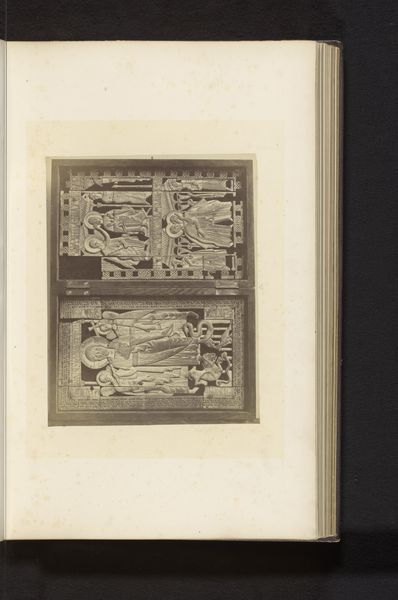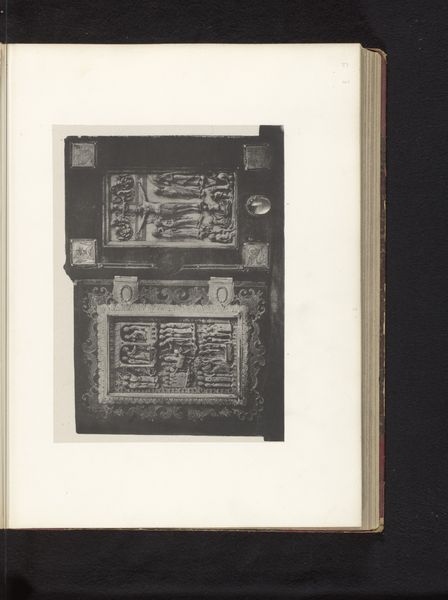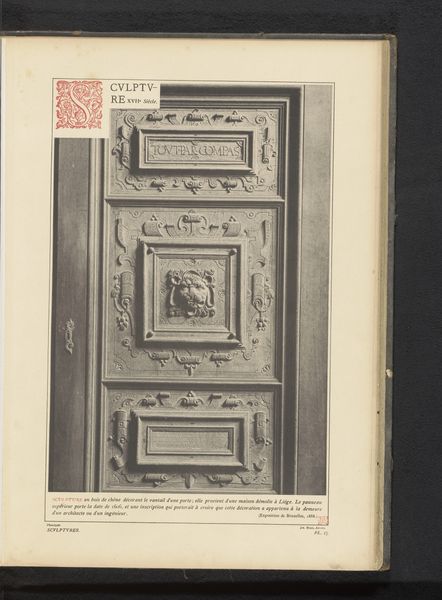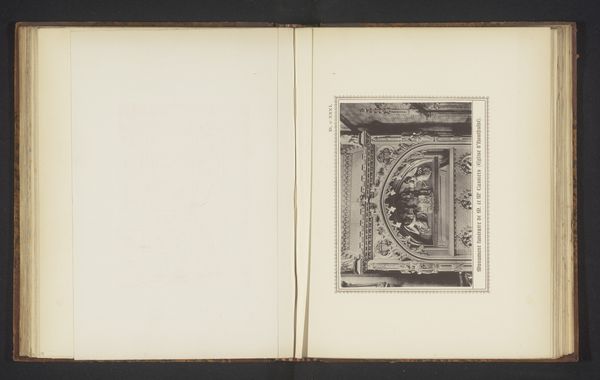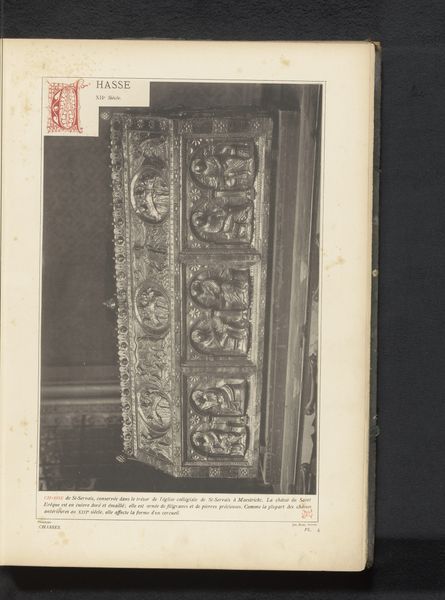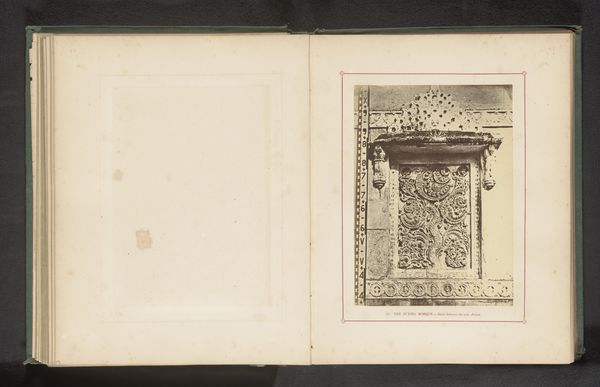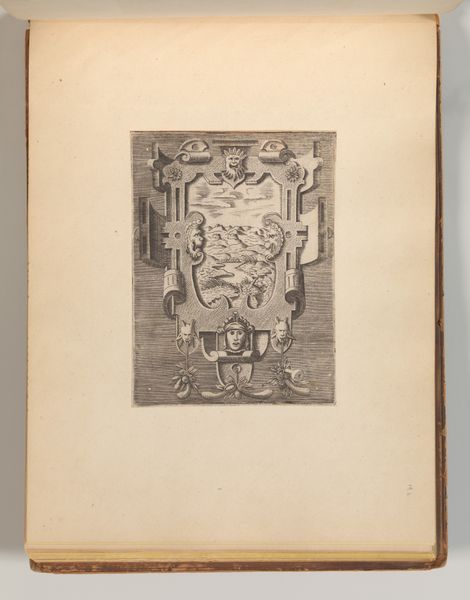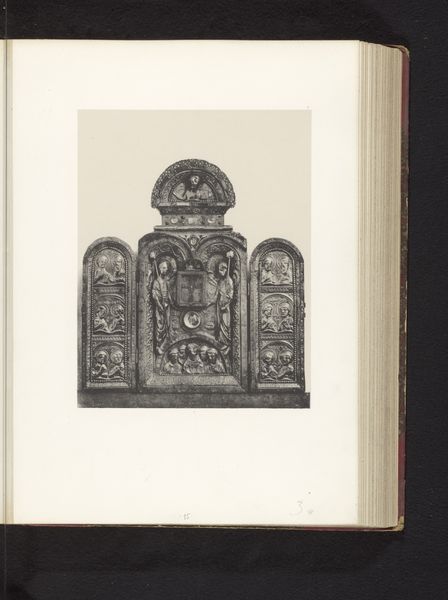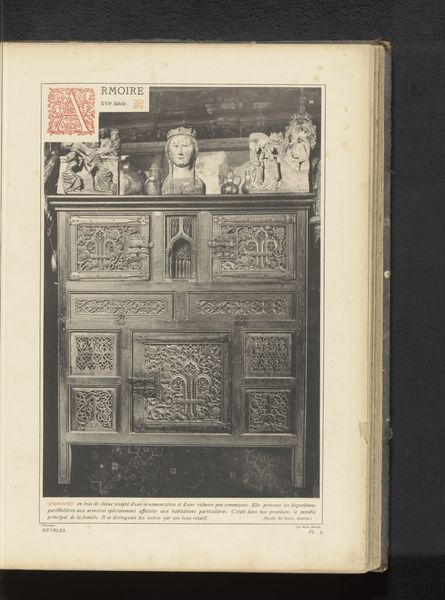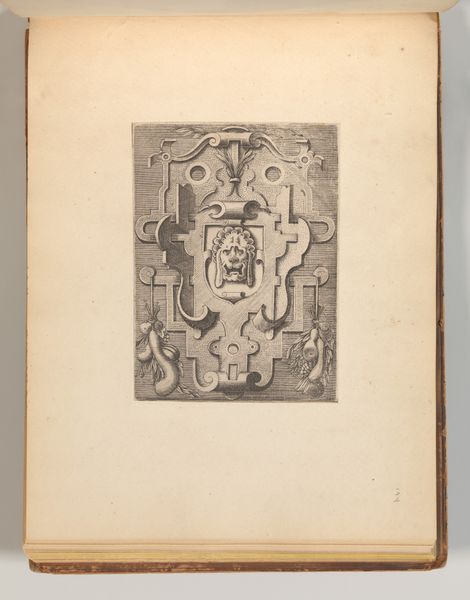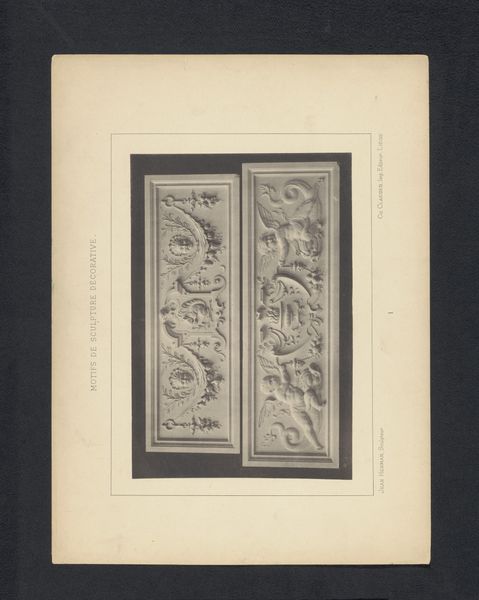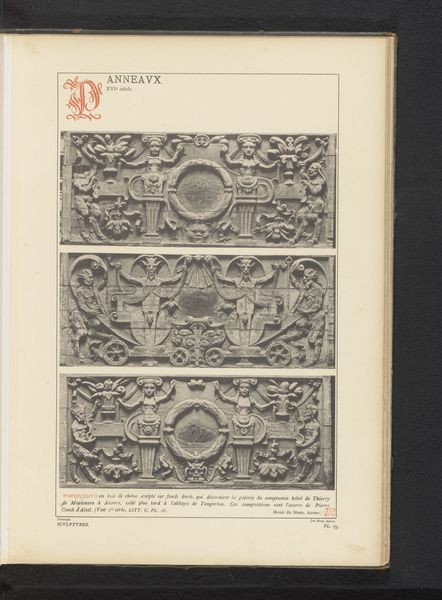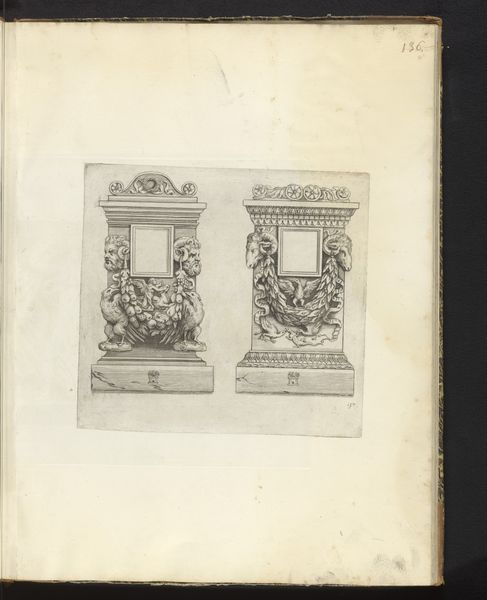
Tweeluik van ivoor met voorstellingen uit het Nieuwe Testament, uit de Sint-Martinskerk in Genoelselderen, opgesteld op een tentoonstelling over religieuze objecten uit de middeleeuwen en renaissance in 1864 in Mechelen before 1866
0:00
0:00
carving, relief, ivory
#
medieval
#
carving
#
relief
#
figuration
#
ivory
#
miniature
Dimensions: height 184 mm, width 232 mm
Copyright: Rijks Museum: Open Domain
Editor: So this is a photograph of an ivory diptych, meaning it’s a carving with two panels, depicting scenes from the New Testament. It's referred to as coming from the Church of Saint Martin in Genoelselderen, and the photograph was taken at an exhibition in 1864. What immediately strikes me is the incredible detail achieved on such a small scale, it feels intricate and precise. What do you make of this work? Curator: The photograph itself captures a moment of rediscovery, doesn't it? An artifact from the medieval period, re-emerging into the light of the 19th century through an exhibition. Each panel, frozen in time, whispers stories. It is intriguing that the images try to capture narratives on a miniature scale that traditionally cover entire walls and ceilings in grand Medieval cathedrals. It feels as if it's trying to preserve a larger, inaccessible world within a personal and intimate form. What stories do you think this might be telling? Editor: Based on the title, stories from the New Testament – so probably pivotal moments from the life of Christ? Curator: Perhaps, it is as much about faith as it is a window into the mind of the carver and the tastes of the era. Every line, every figure is a testament to the craft and beliefs that shaped medieval society. Can you imagine the artist's hand moving with such dexterity to carve from something as precious as Ivory? I also wonder who originally commissioned the work? Editor: That makes me think about the personal connection someone must have had with this object. Now I see it's less of a historical artifact and more of a devotional object. Curator: Precisely. I feel it becomes not just about observation, but about participation in something much larger than ourselves, spanning centuries, bridging the earthly and the divine, even today. Editor: This was fascinating, I can never look at medieval ivory carvings in the same way again! Curator: Agreed, what a lovely artifact. Each work contains stories upon stories within!
Comments
No comments
Be the first to comment and join the conversation on the ultimate creative platform.
